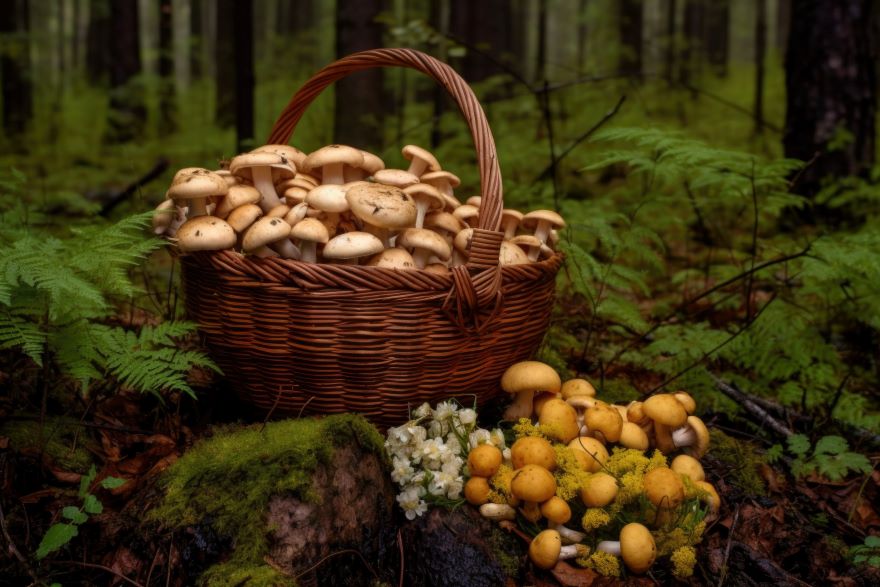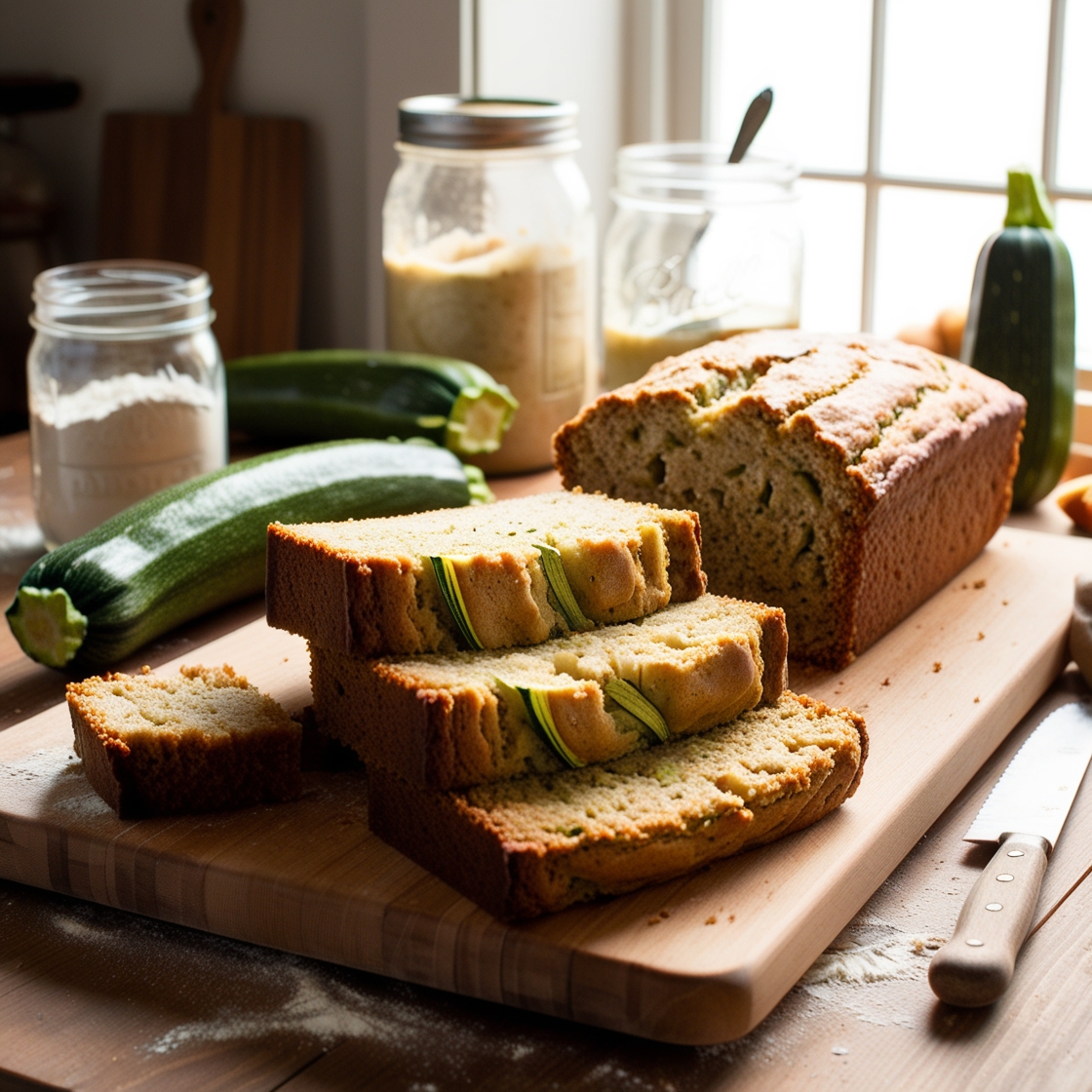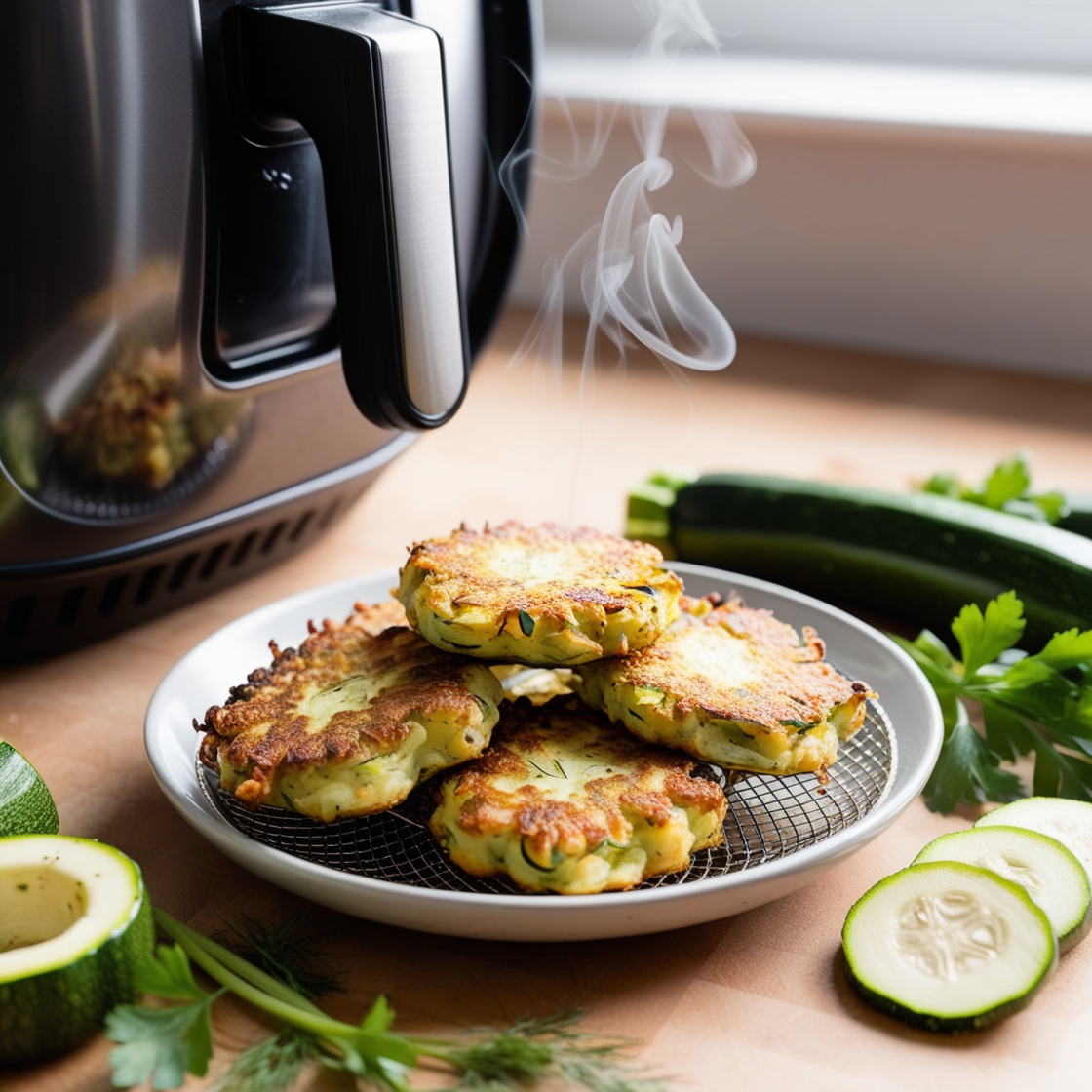When I think about fresh mushrooms, my mind immediately goes to their incredible versatility in the culinary world. With so many different types grown and harvested globally, it’s no wonder they’ve become such a popular ingredient in many delicious dishes. Fresh mushrooms not only offer unique flavors and textures, but also numerous health benefits, making them a great addition to any meal.

Diving deeper into the world of mushrooms, I quickly realized how essential it is to understand the various types and their specific characteristics. This know-how ensures that I can make informed decisions when selecting and storing my fresh mushrooms. Plus, learning about different ways to prepare and cook them has led me to discover exciting, new flavors and recipes that I couldn’t have imagined before.
Key Takeaways
- Fresh mushrooms offer diverse flavors, textures, and health benefits in cooking
- Understanding mushroom varieties enhances the selection and storage process
- Knowledge of mushroom preparation unlocks new culinary techniques and flavors
Nutritional Benefits of Fresh Mushrooms

Fiber Rich Nature
When including fresh mushrooms into my diet, I love that they’re an excellent source of fiber. As a matter of fact, mushrooms contain two types of fiber: soluble and insoluble. Soluble fiber is known to help lower cholesterol levels and improve blood sugar control, while insoluble fiber supports healthy digestion. Incorporating mushrooms into my meals has definitely helped me to maintain a healthy gut and feel full for longer periods of time.
Low-Calorie Content and Weight Management
One of the reasons I often choose fresh mushrooms is because they are low in calories. A single cup of mushrooms contains only 15 calories, making them an ideal addition to my weight management plans. What’s more, fresh mushrooms are high in water content, which also aids in satiety. This combination of low calories and high water content has certainly helped me maintain a balanced, nutritious diet without excessive caloric intake.
Essential Vitamins and Minerals
I have always been a fan of fresh mushrooms as part of my meals because they are packed with essential vitamins and minerals. Some of the key nutrients found in mushrooms include B vitamins, copper, and iron, all of which play vital roles in promoting overall health. For instance, B vitamins are essential for maintaining a healthy metabolism and energy levels, while copper supports immunity and iron aids in oxygen transportation within the body. Over time, I have come to appreciate the numerous health benefits that mushrooms provide.
By incorporating fresh mushrooms into my diet, I have experienced the advantages of their rich fiber content, low-calorie nature, and essential vitamins and minerals. I can confidently say that mushrooms have been a healthy and delicious component of my meals, providing me with numerous nutritional benefits.
Culinary Uses of Fresh Mushrooms
Sautéing Techniques with Butter
One of my favorite ways to prepare fresh mushrooms is sautéing them with butter. The rich and creamy taste of butter truly enhances the earthy flavors of the mushrooms. To do this, simply heat a pan over medium heat, add a generous amount of butter, and wait for it to melt. Then, add your sliced mushrooms and cook for about 5-7 minutes, stirring occasionally, until they are tender and golden brown. I like to season my sautéed mushrooms with salt, pepper, and a touch of minced garlic for added flavor.
Incorporating Mushrooms in Pasta Dishes
When it comes to pasta dishes, I find that incorporating mushrooms adds a delightful texture and depth of flavor. Some of my go-to choices for mushroom pasta recipes include a hearty mushroom stroganoff or a lighter mushroom and spinach fettuccine. For a simple yet delicious combination, try combining cooked pasta with sautéed mushrooms, garlic, olive oil, and freshly grated Parmesan cheese. You’ll be amazed at how such a simple ingredient can elevate your pasta dishes.
Making Flavorful Pizza Toppings
One can’t discuss mushroom dishes without mentioning their excellent role as a pizza topping. Mushrooms have a unique umami flavor that pairs wonderfully with the classic pizza ingredients such as tomato sauce, cheese, and other toppings like onions, bell peppers, and sausage. When I make homemade pizza, I like to sauté my mushrooms with a little garlic and olive oil before adding them to the pizza. This not only brings out their flavors, but also prevents them from releasing too much moisture on the pizza while it bakes.
Mushrooms as a Side Dish
Lastly, mushrooms make a fantastic side dish that can complement a wide variety of main courses. I particularly enjoy roasting them in the oven with some olive oil, salt, and pepper, or even grilling them on skewers with other veggies. Another great side dish option is a simple mushroom stir-fry with soy sauce and a splash of rice vinegar. The possibilities for mushroom side dishes are truly endless, making them a versatile and delicious addition to any meal.
Selection and Storage of Fresh Mushrooms

Choosing the Right Varieties
When it comes to selecting fresh mushrooms, I always pay attention to the variety I need for my recipes. For instance, button mushrooms are quite versatile and can be used in various dishes, while trumpet mushrooms are perfect for adding an earthy flavor and chewy texture to the meal. It’s essential to pick the freshest mushrooms available at the store based on their appearance and aroma.
- Button mushrooms: Look for firm, well-shaped caps with no spots or sliminess.
- Trumpet mushrooms: Seek out specimens with a clean and dry surface, avoiding those with any signs of mold or dampness.
Proper Storage in the Fridge
Once I get the ideal variety of fresh mushrooms, it’s crucial to store them correctly to preserve their freshness. Here are the steps I follow:
- Do not wash: Avoid washing the mushrooms before storing them, as excess moisture can make them spoil faster.
- Use a paper bag: Place the whole, unwashed mushrooms in a brown paper bag, which allows them to breathe while keeping them from drying out too much. Fold the top of the bag over to close it securely. You can find more information about this method here.
- Store in the fridge: Place the bag with mushrooms in the main compartment of your refrigerator. This way, they can stay fresh for up to a week.
- Alternate method: Another option is to place the mushrooms in a large glass bowl without overcrowding them, cover the bowl with plastic wrap, and poke five holes in it. This method also works well for storing fresh mushrooms, as mentioned in this article.
By following these guidelines, I can ensure my mushrooms remain delicious and ready for my culinary creations.
Understanding Different Mushroom Varieties

Characteristics of Wild Mushrooms
As someone who appreciates the culinary delights of mushrooms, I find it fascinating that there are thousands of different wild mushroom varieties. Often, wild mushrooms have a more intense and unique flavor compared to their cultivated counterparts. However, it is crucial to exercise caution when foraging for wild mushrooms, as some varieties can be highly toxic or even lethal. One should never consume a wild mushroom without proper identification and knowledge.
Morels and Chanterelles: A Gourmet’s Delight
Two of my favorite gourmet wild mushrooms are Morels and Chanterelles. Morels have a honeycomb-like cap and grow in deciduous forests, while Chanterelles have a trumpet-like shape and are usually found in mixed woods. Both of these mushrooms have a delicious, earthy flavor and a pleasant texture that many chefs and food lovers covet. Although these varieties can be expensive, their unique taste profile certainly justifies the price for special occasions or luxurious meals. For more insights on mushroom varieties, you can visit Mushroom Council’s website.
Common Cultivated Types: Shiitakes and Button Mushrooms
On the other hand, more commonly cultivated mushroom types like Shiitakes and Button mushrooms are widely used in various cuisines. Shiitakes are known for their strong, meaty flavor and become a popular ingredient in Asian dishes. Button mushrooms, which constitute about 90 percent of the United States mushroom consumption (source), have a mild taste and versatile nature. These types of mushrooms are suitable for many recipes, including soups, salads, and side dishes.
To summarize, exploring the world of mushroom varieties can be a delightful and enriching experience. Whether it’s a gourmet wild mushroom like Morels or Chanterelles or the common cultivated Shiitakes and Button mushrooms, these culinary treasures will undoubtedly elevate your meals and continue to excite your palate.
Cooking Tips and Mushroom Preparation

Preparing Mushrooms for Cooking
When it comes to cooking mushrooms, I like to make sure they’re clean and well-prepped. I gently wash my mushrooms under running water to remove any dirt, but avoid soaking them. They can become too moist and won’t cook properly. After they’re clean, I like to slice, chop, or quarter them to get them ready for cooking.
In the pan, I usually start by adding some butter. The key to perfect mushrooms is to let them cook without stirring at first. As they may release some liquid, it’s imperative to have patience. When the mushrooms are reduced in size and develop a golden crust, I add more butter and proceed to stir them.
Pairing Mushrooms with Other Ingredients
Mushrooms have a distinctive earthy flavor that pairs well with various ingredients. When I want to enhance the taste of the mushrooms, I often combine them with shallots. They have a delicate, slightly sweet taste, which complements the umami flavor of mushrooms. Sautéing shallots in butter before adding the mushrooms brings out their best flavors.
Mushrooms also go well with different types of proteins. I enjoy pairing them with vegetable dishes, chicken, and steak. For example, I love cooking a simple chicken and mushroom dish, where the flavors meld together harmoniously. Similarly, adding mushrooms as a topping on a juicy, well-seasoned steak elevates the taste of the meat.
Overall, mushrooms are a versatile and delicious addition to your culinary toolbox. With some preparation and the right combinations, you can create memorable dishes to impress your taste buds and those around you.
Frequently Asked Questions

What is the proper storage method for extending the shelf life of mushrooms in the refrigerator?
I find it essential to store mushrooms in a paper bag inside the refrigerator. Avoid storing them in a plastic bag, as it will trap moisture and promote spoilage. Check the mushrooms daily, and if you notice any excess moisture, use a paper towel to gently pat them dry. With this method, your mushrooms should stay fresh for about a week.
What steps should be followed to properly clean mushrooms without causing damage?
To clean fresh mushrooms, I gently brush off any visible dirt with a soft-bristle brush or a damp paper towel. Avoid soaking mushrooms in water, as they can absorb moisture and become soggy. If you need to rinse them, do so quickly and then pat them dry immediately.
Can you categorize the most commonly consumed edible mushrooms?
Based on my knowledge and experience, the most commonly consumed edible mushrooms can be categorized into three main groups: button mushrooms, which include white and cremini varieties; wild mushrooms, such as chanterelles and morels; and specialty mushrooms, like Shiitake, Oyster, and Lion’s Mane.
What are key indicators to look for when selecting mushrooms for purchase?
When I select mushrooms, I generally look for the following key indicators:
- The mushrooms should be firm and have a smooth, even appearance.
- They should be free of any mold or slimy spots.
- The gills should be intact and not overly dark or wet.
- The mushrooms should have a fresh, earthy smell, not an unpleasant odor.
What techniques can be used to preserve mushrooms for long-term use?
There are a few preservation techniques that I use for long-term storage. One option is to sauté the mushrooms lightly in some oil or butter and then freeze them in an airtight container or freezer bag. Another option is to dehydrate the mushrooms using a food dehydrator or an oven with a very low heat setting. Once dehydrated, store the mushrooms in an airtight container in a cool, dark place.
Are there any health benefits associated with incorporating mushrooms into one’s diet?
I believe that incorporating mushrooms into your diet can offer various health benefits. For example, mushrooms are low in calories and sodium but rich in essential nutrients such as vitamins, minerals, and antioxidants. Some studies have also suggested that certain mushrooms, like Shiitake and Reishi, may help boost the immune system and offer other potential health benefits. However, it’s essential always to consume a balanced and diverse diet to ensure optimal health.

*We may earn a commission for purchases made using our links. Please see our disclosure to learn more.



